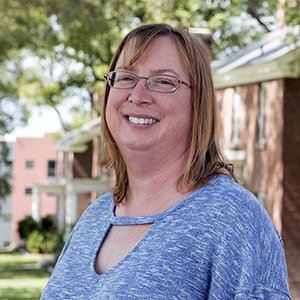Professor Shelley D. Minteer
Professor Shelley D. Minteer
Department of Chemistry
College of Science
University of Utah
"Catalytic Cascades for Energy Conversion Devices"
Over the last decade, there have been major developments in materials engineering for bioelectrodes (i.e. bioanodes and biocathodes in biofuel cells), including the engineering of nanomaterials and nanostructured electrodes for increasing electrochemically active surface areas and increasing the rate of direct electron transfer. However, materials engineering does not solve all problems in bioelectrocatalysis. This talk will detail the use of bioengineering to improve the performance (current density, power density and/or efficiency) of bioelectrodes. Enzymes have evolved to function in a particular environment in a living cell, but operating at the biointerface in a bioelectrode is a very different microenvironment. This talk will include a discussion of the use of recombinant enzymes that can be tailored to the bioelectrode application and their microenvironment. The talk will also discuss the use of these recombinant enzymes in the formation of minimal catalytic cascades for deep or complete oxidation of biofuels and substrates/ analytes. This presentation will also discuss the use of bioscaffolding for improving the performance of these catalytic cascades through controlling the proximity of sequential catalytic active sites.
Shelley D. Minteer
Prof. Shelley Minteer is the Dale and Susan Poulter Endowed Chair of Biological Chemistry and Associate Chair of Chemistry at the University of Utah. Prof. Minteer is also the director of the NSF Center for Synthetic Organic Electrochemistry. Prof. Minteer’s research focuses on improving the abiotic-biotic interface between biocatalysts and electrode surfaces for enhanced bioelectrocatalysis. These biocatalysts include microbial cells, organelles, redox proteins, and oxidoreductase enzymes. The Minteer group utilizes a variety of electroanalytical techniques (linear polarization, cyclic voltammetry, differential pulse voltammetry, differential pulse amperometry), as well as a variety of biological and spectroscopic techniques to accomplish these goals.
